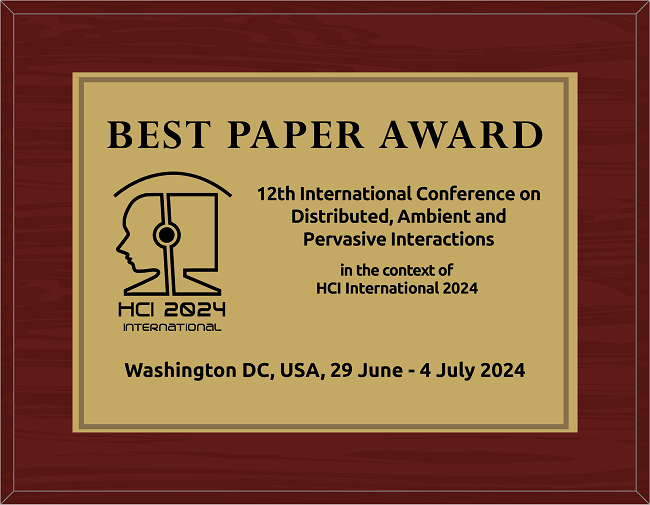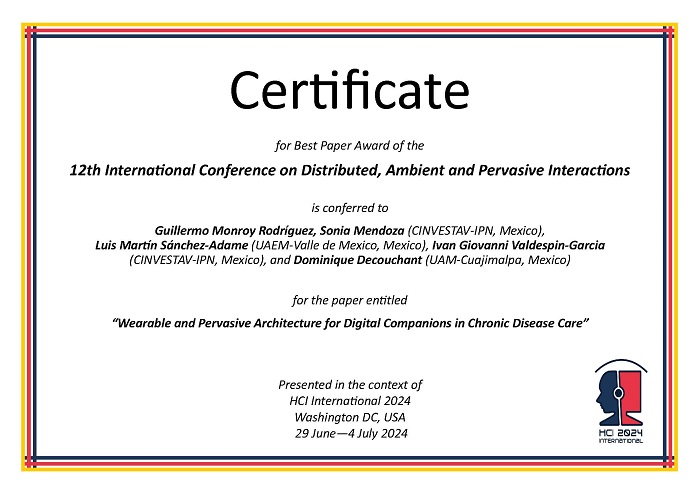
The Best Paper Award of the 12th International Conference on Distributed, Ambient and Pervasive Interactions
has been conferred to
Guillermo Monroy Rodríguez, Sonia Mendoza (CINVESTAV-IPN, Mexico),
Luis Martín Sánchez-Adame (UAEM-Valle de Mexico, Mexico),
Ivan Giovanni Valdespin-Garcia (CINVESTAV-IPN, Mexico),
and Dominique Decouchant (UAM-Cuajimalpa, Mexico)
for the paper entitled
"Wearable and Pervasive Architecture for Digital Companions in Chronic Disease Care"

Luis Martín Sánchez-Adame
(presenter)

Best Paper Award for the 12th International Conference on Distributed, Ambient and Pervasive Interactions, in the context of HCI International 2024, Washington DC, USA, 29 June - 4 July 2024

Certificate for Best Paper Award of the 12th International Conference on Distributed, Ambient and Pervasive Interactions presented in the context of HCI International 2024, Washington DC, USA, 29 June - 4 July 2024
Paper Abstract
Nowadays, advancements in sensor technologies, microcontrollers, and radiofrequency systems have facilitated the development of systems capable of measuring various physical parameters in diverse environments. This progression underscores the necessity for seamless integration of these systems to accomplish diverse objectives. Digital companions, epitomizing this trend, are computer-assisted systems designed to synergize with human users. They are a nexus between rigorous process efficiency, voluminous data management, and human interactions. In response to the imperative for integrating these technological and scientific innovations, a compelling proposition has emerged to develop a digital companion architecture tailored to assist patients with chronic conditions such as diabetes. This proposed architecture comprises various services, including speech recognition and biometric monitoring control. These elements are integral to the system’s ability to deliver tailored and effective responses to the user, aiming to enhance the quality of life for individuals suffering from this chronic disease. Preliminary evaluations of a prototype grounded in our architecture demonstrate a positive anticipated user experience.
The full paper is available through SpringerLink, provided that you have proper access rights.